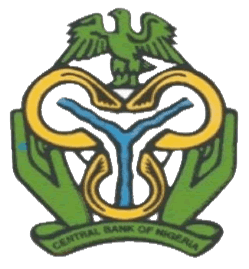Please use this identifier to cite or link to this item:
https://library.cbn.gov.ng:8443/jspui/handle/123456789/799| Title: | Foreign exchange management in Nigeria: past, present and the future. |
| Authors: | Obaseki, P. J. |
| Keywords: | Structural Adjustment Programme (SAP), Foreign Exchange Management (FEM), Naira exchange rate, External sector, Oil sector, Nigeria. |
| Issue Date: | Mar-1991 |
| Publisher: | Central Bank of Nigeria, Research Department. |
| Citation: | Obaseki, P. J. (1991). Foreign exchange management in Nigeria: past, present and the future. CBN Economic and Financial Review, 29(1), 57-77. |
| Series/Report no.: | Vol. 29;No. 1 |
| Abstract: | The paper examined foreign exchange management in Nigeria during the period prior to and since the introduction of the Structural Adjustment Programme (SAP), and outlined the prospects for foreign exchange management in the future. It highlighted factors that need to be reversed by appropriate policies if a crisis-free and more relaxed foreign exchange management mechanism is to evolve. The major findings of the paper include the inability of exchange control measures adopted before the commencement of SAP to tum around the external sector of the economy, especially since 1982 when Nigeria started to experience serious foreign exchange problems. The reasons adduced were that exchange controls, were not applied consistently, they needed a lot of policing and were often subject to large scale corruption which derailed the system. Another reason was that the administered exchange rate mechanism adopted during this period led to the overvaluation of the Naira exchange rate. In an attempt to correct the serious disequilibrium in the external sector of the economy and evolve a more rational basis for foreign exchange management, the control system was replaced with a market based system with the introduction of the Structural Adjustment Programme in July 1986. Under the Programme, exchange controls on current account transactions have been dismantled and the exchange rate for the Naira is now determined through an auction system based on market forces. The main achievements of the new system are the elimination of payments arrears that proved difficult to tackle during the exchange control era, the increase in domestic capacity utilisation due to the increased local sourcing of raw materials, elimination of the over-valuation of the naira exchange rate, improvement in the composition of non-oil exports and relatively more relaxed atmosphere for foreign exchange management. However, the problems of foreign exchange inadequacy, dependence on the oil sector for foreign exchange earnings, continuous depreciation of the Naira exchange rate and the attendant inflationary expectations are yet to be resolved. In order to find solutions to some of these problems, the exchange rate for the ,Naira should be determined within a band to ensure stability while still relying on market forces; demand management policies should continue to be restrictive to achieve stability in the short run while supply side measures to increase foreign exchange receipt should be pursued as both a medium and long tern objective. |
| URI: | http://library.cbn.gov.ng:8092/jspui/handle/123456789/799 |
| ISSN: | 1957 - 2965 |
| Appears in Collections: | Economic and Financial Review |
Files in This Item:
| File | Description | Size | Format | |
|---|---|---|---|---|
| Foreign exchange management in nigeria past, present and the future.pdf | 478.7 kB | Adobe PDF |  View/Open |
Items in DSpace are protected by copyright, with all rights reserved, unless otherwise indicated.
Admin Tools
